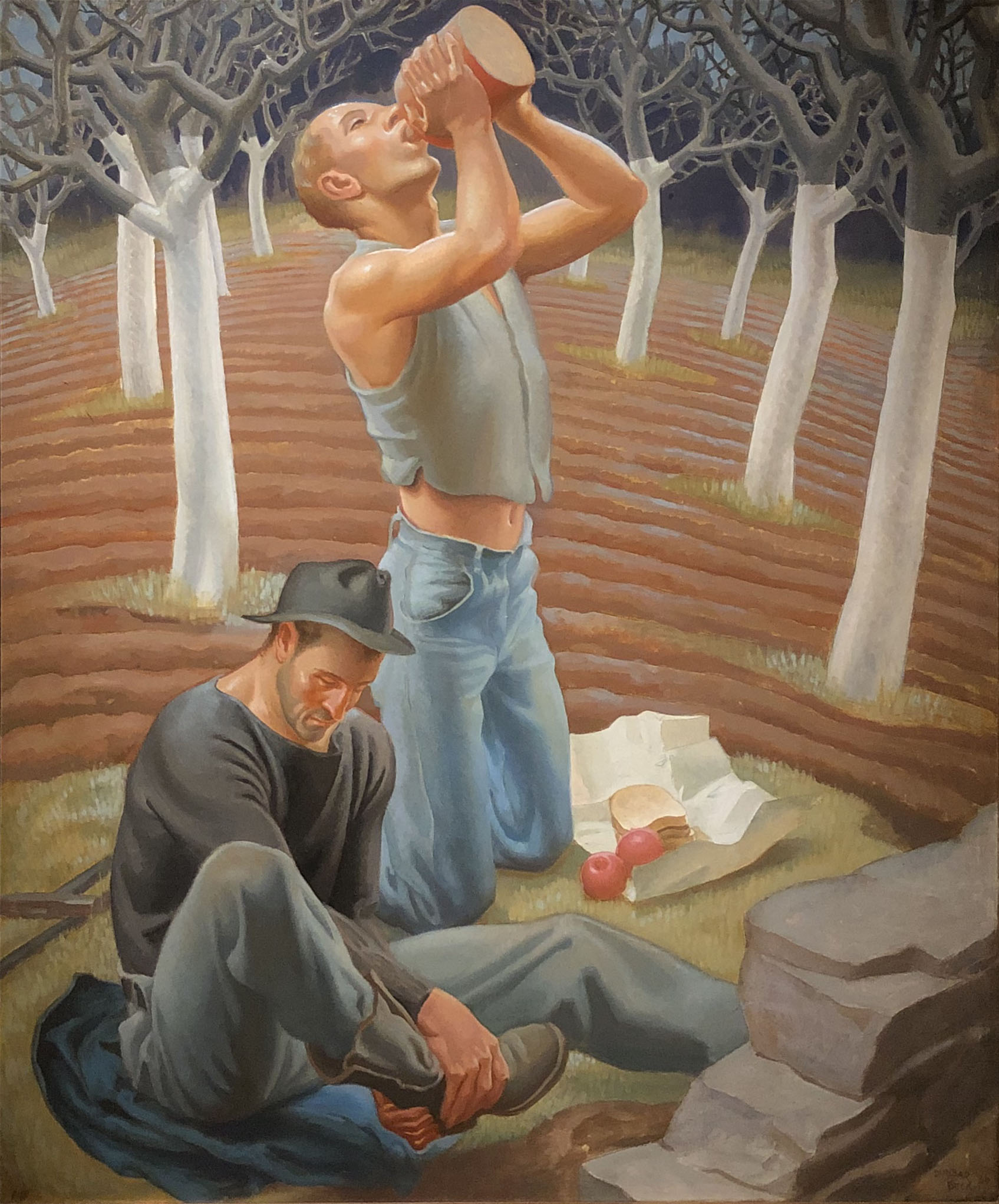Tempera Lives at the Huntington
 |
| Mark Gertler, Portrait of Dora Carrington, 1912. The Huntington Library, Art Museum, and Botanical Gardens |
 |
| Joseph Edward Southall, The Daughter of Herodias, 1904-1906. Collection of Lynda and Stewart Resnick |
Joseph Edward Southall (1861-1944) converted from oil to tempera paint after reading Ruskin, who pronounced: "I am disposed to think that ultimately tempera will be found the proper material for the greater number of most delightful subjects."
Southall raised chickens to supply the necessary egg yolks. His Daughter of Herodias is dated 1904-1906, contemporary with Picasso's Rose Period. In subject it harks back to Gustave Moreau, and its treatment recalls late-Renaissance manuscript illumination through the lens of Carpaccio, the Pre-Raphaelites, and Punch magazine caricatures. The side-eye facial expressions are worthy of Disney villains.
 |
| Small detail of Southall's The Daughter of Herodias |
Southall's reputation cratered with the rise of modernism. Roger Fry dismissed Southall's art as "incredible tempera sham Quattrocentro modern sentimental things." But in the 1920s, Picasso was so taken with one Southall painting that he tried to buy it on the spot.
 |
| Dunbar Dyson Beck, Lunch Break, 1936. Collection of Lynda and Steward Resnick |
American artist Dunbar Dyson Beck (1902-1986) trained at Yale, studied in Rome, and taught in New York, where he did a mural for Radio City Music Hall. He spent much of his career on the West Coast. That qualified him as a Regionalist, and like other such artists he favored tempera for its matte finish and Renaissance associations. Today Beck is known mainly for homoerotic paintings of workers and boxers, often with magic realist or even art deco elements. Lunch Break shows implausibly sensuous California laborers in an orchard harking back to old Siena. A few years later the Lincoln Kirstein clique of Paul Cadmus, George Tooker, and Jared French achieved notoriety for LGBT-forward paintings, also in tempera.
"Method and Material: Tempera Painting in Focus" is on the top floor of the Huntington Art Gallery and runs through March 13, 2023.
 |
| George Tooker, Bathers (Bath Houses), 1950. The Huntington Library, Art Museum, and Botanical Gardens |
Comments
The tempera medium is the bomb!
I rarely ever leave the Met without visiting Tooker's masterpiece "Government Bureau" of 1956 in egg tempera on wood.
Following is the link:
https://www.metmuseum.org/art/collection/search/488943
Note: the Met's photo of the picture is disappointingly nano.
Here's a better look at it:
https://www.wikiart.org/en/george-tooker/government-bureau-1956
Whitney has another Tooker masterpiece: his "Subway" of 1950.
Following is the link:
https://whitney.org/collection/works/3052
And Brooklyn has an oil on canvas gem that mimics the precision of tempera: a portrait of Paul Cadmus by Luigi Lucioni (American, born Italy, 1900-1988).
Following is the link:
https://www.brooklynmuseum.org/opencollection/objects/2746
Beyond that, some of the artworks in the Huntington show seem like they'd fit the "narrative" format of George Lucas's future museum.
In turn, I'm sure a few of George and Mellody Lucas's own Hollywood hipster friends probably will similarly frown at the Lucas museum's old-fashioned stuff. Of course, such hipsters will be aghast at the Norman Rockwells, etc.